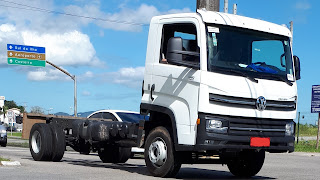Modern generations of light-duty Diesel engines have followed an evolutionary path which departed from their essentially utilitarian roots, reaching a level of refinement comparable to gasoline engines. Disadvantages regarding mostly the specific power and engine speed gave way to such a complexity level that often leads to some questions regarding the extent of benefits obtained from this so-called evolution. It's worth to notice the displacement-biased tax brackets in markets such as the European Union, where Diesel engines ranging from 1600cc to 2400cc have already been heavily penalized and any higher-displacement one becomes too expensive even in some prestige models. It may not seem so harsh on those who could opt for the 2.0L Ingenium turbodiesel instead of the 3.0L V6 AJD-V6 twin-turbo in a Land Rover Discovery 5 as a reference, but there are still objectionable aspects regarding the push toward the downsizing.
While some countries such as the United States simply don't apply a displacement-biased tax scheme, others such as Brazil are amended to exclude certain vehicle classes such as 4WDs and trucks, which could already seem enough to discourage downsizing. Taking as references the 3.0L turbodiesel fitted to the Land Rover Discovery 5 and the inline-4 Cummins ISF3.8 with a single turbocharger usually found in commercial trucks such as the Volkswagen 11.180 Delivery, it's important to look at aspects such as manufacturing costs and ease of maintenance due do the amount of cylinders and valvetrain layout, but even the emissions compliance which is often pointed out favorably to downsizing becomes objectionable. Considering the gross vehicle weight rating for both models, and the gross combined weight rating regarding the Discovery while towing, engine speed differences at peak power and torque ratings won't prevent the larger-displacement ISF3.8 to fare even better at some conditions as it's able to sustain a comfortable cruising speed at a lower RPM. Since the ISF3.8 would be more understressed in a Discovery due to its GVWR only beating the kerb weight of the Volkswagen 11.180 for a margin lower than 10%, plus the trucks's GVWR being around 3 times higher, resorting to some high EGR load and decreasing the AdBlue/DEF consumption proportionately to fuel consumption wouldn't be so troublesome regarding an overall performance and aftertreatment efficiency in the SUV as it would be in the truck. While a smaller-displacement engine operating at a higher speed would be more overstressed, thus requiring a higher AdBlue consumption to keep Nitrogen oxides emissions compliant to the standards enforced.
Another relevant matter regarding how downsizing became pointless is the production of some SUV models from European-based automakers such as the BMW X5 not even taking place within Europe, which could be seen as an opportunity to circumvent the downsizing trend in overseas markets. Since the current generation of the X5 for example is only made in the United States, Thailand, Indonesia and India, it's worth to consider the different tax structures which may lead the downsizing to be not so desirable in the United States as it would be in Thailand for example. However, it's still relevant to look at a more modest amount of cylinders and valvetrain layout, which also have some advantages often neglected amid the attempts to make Diesel engines closer to the feeling of their gasoline counterparts instead of taking benefit from their efficiency-enhanced nature.





No comments:
Post a Comment
Only comments written in English are published. Not so rigid about the grammar, but some regional slang should be avoided to make it clear and easily understandable.